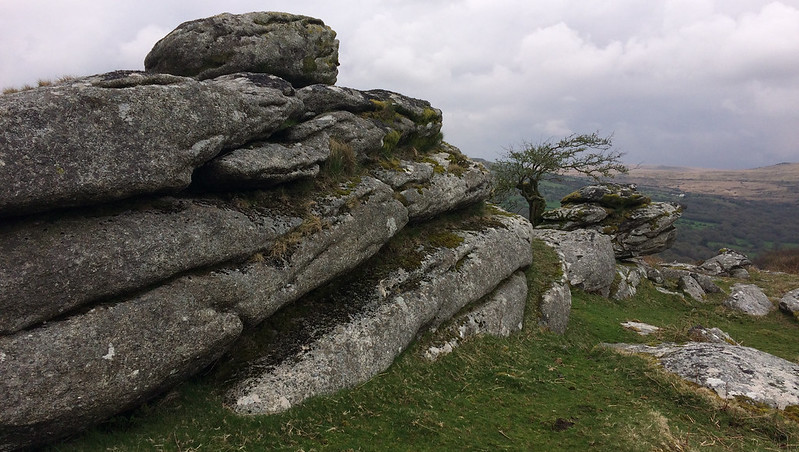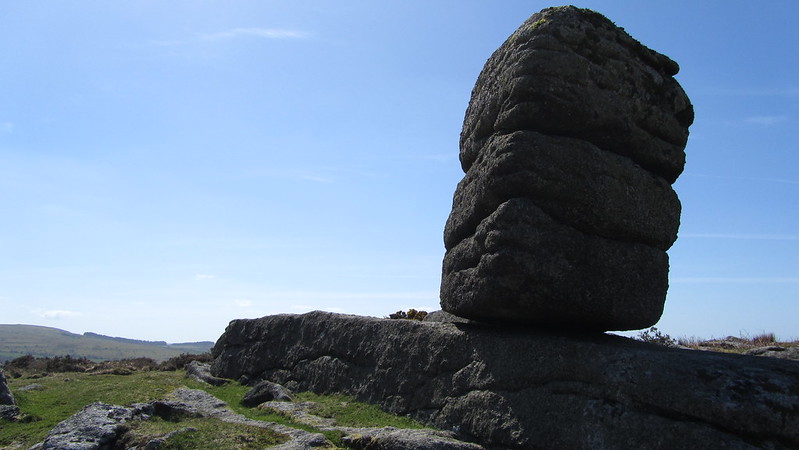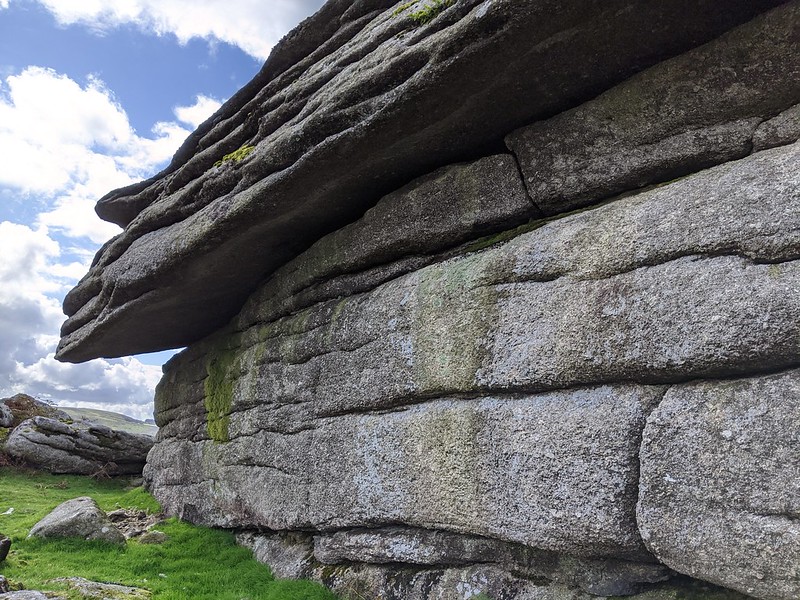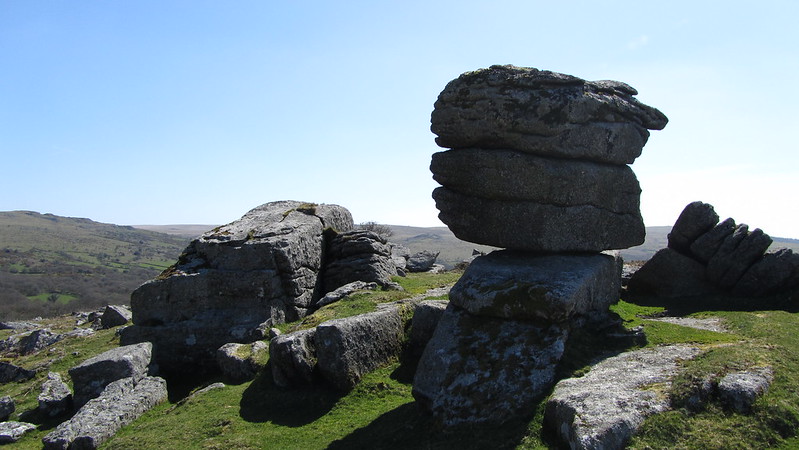TORS OF DARTMOOR
a database of both lesser- & well-known rocks and outcrops
Heckwood Tor When approached from most directions, the rocks of Heckwood Tor fail to inspire in comparison to the neighbouring rockpiles of Vixen Tor and Pew Tor positioned as they are on top of a gentle hill. Comprising of mostly low rocks, the closer you look you will discover that there is much to explore, and the area is actually steeped in industrial archaeology. This alone makes a visit worthwhile.  Extending for some 300 metres on a west to east axis, the tor covers a respectable distance and near the top of the hill there is a very prominent balancing boulder, this being the most obvious feature when viewed from nearby landmarks such as Feather and Pew Tors. As you perambulate the rock, you struggle to comprehend how it is still standing. Following the tor down the hill, you will encounter a fabulous xenolith (pronounced 'zeenolith'); this marking where country rock was infused into the granite. This example presents as a distinctive pale mass on the vertical, rough edge of an outcrop, at approximately SX 53839 73775. A short way to the north of the tor are the remains of an oblong stone trough, presumably abandoned here because of splitting during transportation.  As you near the conclusion of the tor to the east, the rocks become even more substantial, culminating in a huge overhanging slab that is veiled from nearby viewpoints by trees that find a shelter. Eric Hemery (1983) writes of Heckwood Tor: "It is likely that the former abundance of oak woods on both valley sides gave the tor its name. Rock-basins of irregular shape are numerous, and the pillar-like pile was once higher, the original summit block now lying below it. The pile on the farther edge of the plateau stands on the brink of Heckwood Quarry, a late nineteenth-century working, where a fine dressed block still remains on the quarry floor."  The landscape here is rich in moorstone, that is granite that has been heavily worked by stonecutters. All about the slopes are feather and tare marks, the tell-tale signs of rock splitting. Despite its modest altitude, views from Heckwood Tor are thrilling encompassing the Walkham Valley as it makes its final rise into high Dartmoor, bounded by the giant bosses of the Staple and Mis Tors, northward. The dense greenery beneath the tor conceals much of the river's beauty and the rocks of Hucken Tor eastward that were the area bereft of trees would fiercely oppose Heckwood Tor across the valley.
| ||||||||||||||||||||||||||||